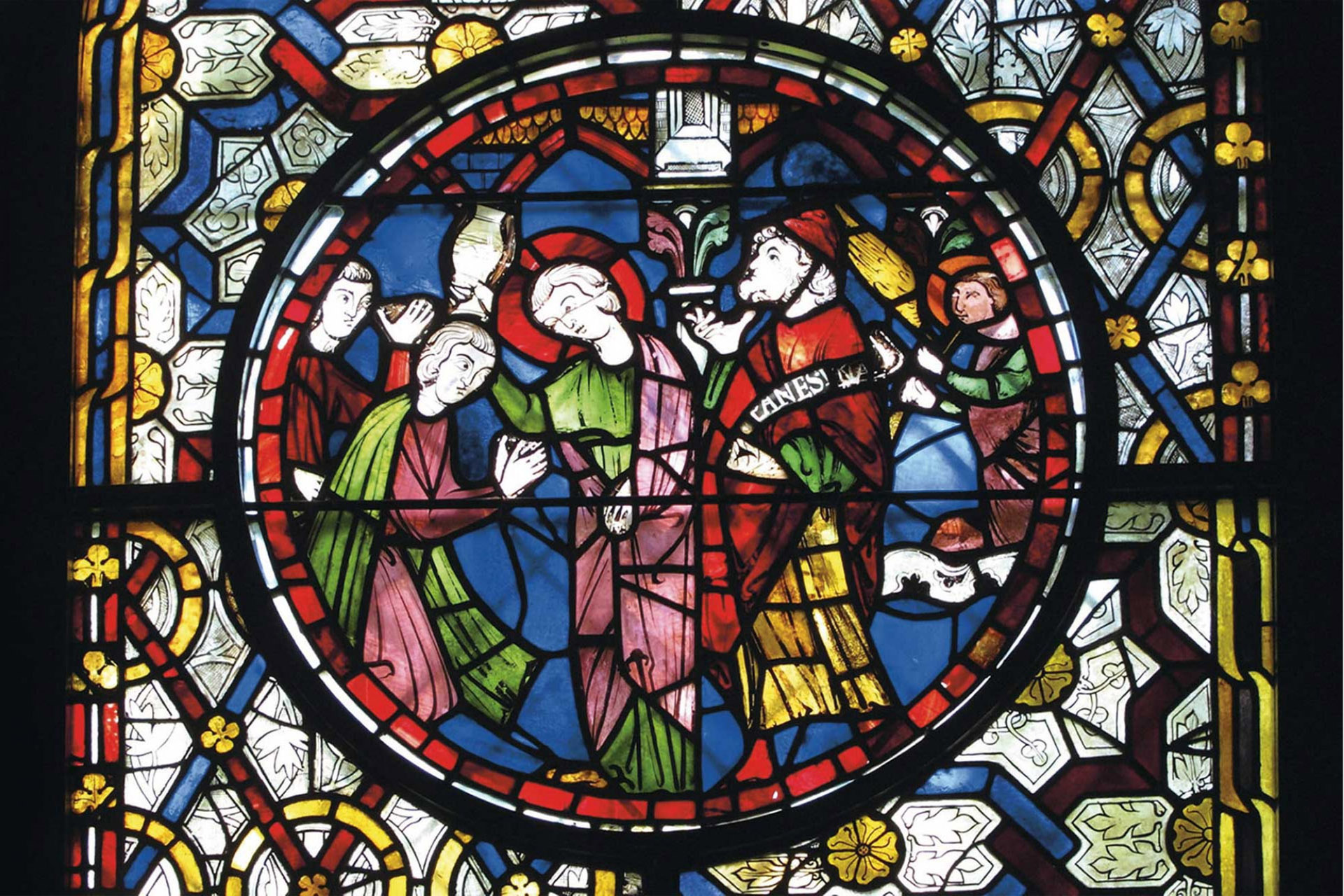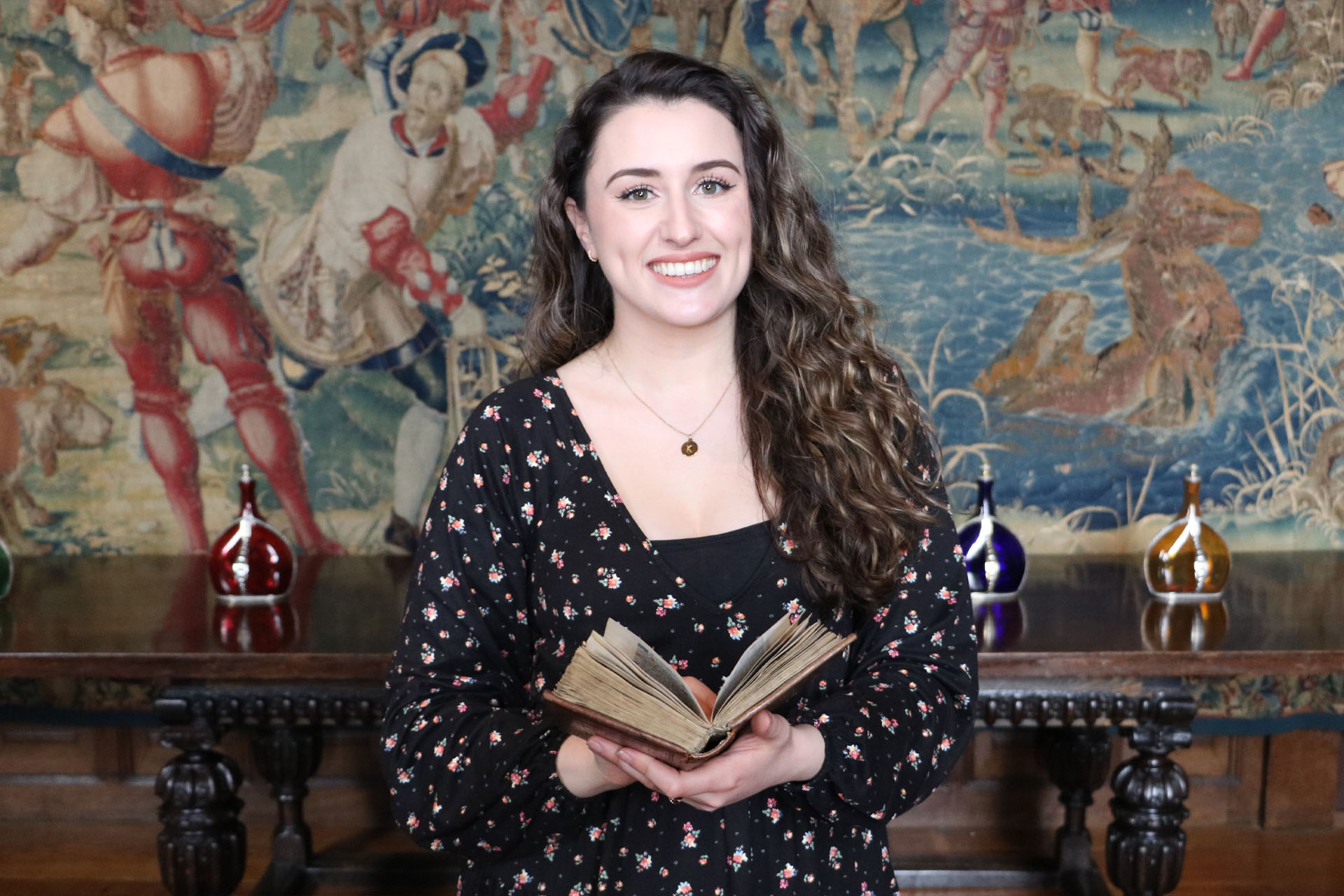By Kate McCaffrey
MA Medieval and Early Modern Studies
Last January, I was lucky enough to be able to closely study two of Anne Boleyn’s Books of Hours, both held in the private collection at Anne’s childhood home, Hever Castle in Kent. Thanks to a note of recommendation from my wonderful supervisor, Dr David Rundle, as well as my own personal connection with the castle, having worked there on and off for six years, I was able to arrange a visit. I initially thought this privileged experience might result in an interesting essay for my palaeography module. I never expected that it would result in the uncovering of new, exciting evidence that formed the subject of my MA thesis.
Arguably the most famous of the two Hours held at Hever is the beautifully illuminated manuscript, made in Bruges around the year 1450 for an unknown English owner. It contains Anne’s recognisable inscription, le temps viendra (the time will come) as well as various other inscriptions signed by members of prominent families from the Henrician court. Surprisingly, it was not this book but the smaller, printed, less obviously magnificent of the two Hours that particularly caught my attention.
Prior to my research, all that was known about this printed Hours was that it was produced by the prolific French printer, Germain Hardouin, and contained another signed inscription written by Anne, this time reading, ‘Remember me when you do pray that hope doth led from day to day’. Bound in simple brown leather and bearing signs of woodworm damage, it has largely been overlooked in scholarship, perhaps because of its humble appearance. Certainly, there has even been confusion over some of its most basic elements. The date of its production has been doubted, but it was most likely printed in 1527, due to the inclusion at the start of the book of a calendar for the year 1528. This book is (or was!) even affectionately known at Hever as the ‘boring one’ in their collection.
It should not, however, be dismissed as a cheap printing. There are several indicators that serious care has gone into the production of this volume, which was clearly made with a well-heeled English market in mind. The parchment has been polished, the colourful decoration customised, and the woodcuts hand-painted in a workshop overseen by Hardouin himself. Significantly, the production of content for an English audience is strikingly rare in Hardouin’s output. If this was not enough evidence to prove that Hever’s printed book was made for a wealthy audience, then I present another facet to my research: Anne Boleyn was not the only leading, sixteenth-century female to own a copy of this very same printing.
In fact, the other famous name associated with this book is none other than Anne’s greatest rival in love and power, and Henry VIII’s first wife, Catherine of Aragon. Currently held in the Morgan Library, New York, is a copy of the very same 1527 Hardouin printing that was once owned by Catherine. At such a pivotal moment in the changing structure of the Henrician court, this newly uncovered connection between these two leading women raises hugely intriguing issues about their relationship with one another, and with their books. At the very least, Anne’s ownership of the same volume as Catherine suggests emulation, and imitation, of a royal status she would achieve herself in only seven years’ time.
The later sixteenth-century provenance of Hever’s Hours after Anne’s ownership has, up until this point, been completely unknown. It is, therefore, a particular delight to be able to share this part of my research. In the process of closely studying the book, I came across what appeared to be the remnants of four further inscriptions that had later been erased. Thanks to an ultraviolet light, photo editing software and many months of stretching my palaeography knowledge to its limit, I recovered partial transcriptions of each note. While full transcriptions remain, for the present, frustratingly elusive due to the vigour of the erasures, I was able to uncover the names of the authors of each inscription. This in turn has allowed me to reconstruct the path that this book took, and the hands through which it passed, after Anne’s ownership.
Emerging from the highly interconnected network of names is a story of gendered community, solidarity and bravery. A covert circle of predominately female owners worked together to protect Anne’s signed note within the book and thus cherish her memory, despite the widespread attempts to dishonour her in the wake of her downfall. The family names of those who wrote in the book after Anne, and so remembered her as her inscription demanded, are: Gage, Shirley and West. These names are all linked through the extended family tree of a fourth name: the Guildfords from Cranbrook in Kent.
A particularly poignant connection from within this group of trusted family members links Anne Boleyn’s printed Hours to her daughter, Elizabeth I. This connection will be explained in greater detail in forthcoming posts, as will each aspect of my research, but a brief summary is this: Mary Hill, the granddaughter of Elizabeth Shirley (an author of a newly uncovered inscription in Anne’s book), married John Cheke (the childhood tutor of Elizabeth I) and became and remained a close friend of Elizabeth’s until the queen’s death in 1603. It is an attractive, if unprovable, possibility that more than twenty years after Anne’s execution and during the reign of her daughter Elizabeth, Mary Hill was able to share Hever’s Hours with the Queen and Elizabeth could view her mother’s signed inscription. A connection to Anne that once would have encouraged the book’s destruction, later ensured its survival.
You can follow Kate’s research journey over on her blog and on Twitter @kateemccaffrey.
Photo by Hever Castle & Gardens.

